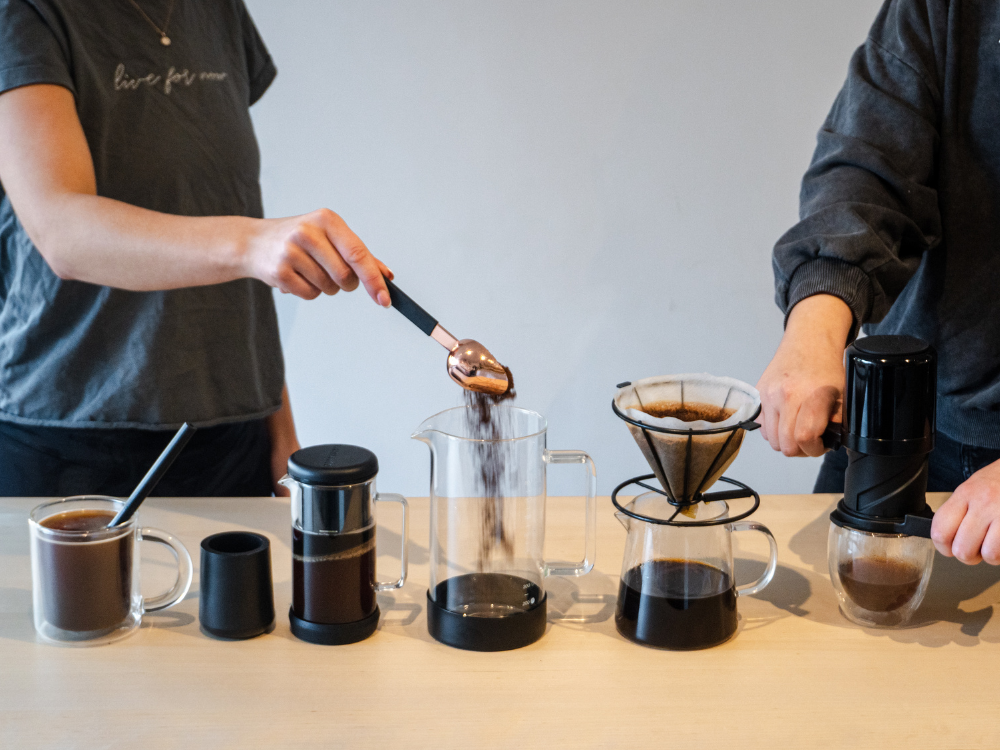The primary differences between filter coffee and espresso lie in the brewing method, grind size, brewing time, and resulting flavour profile. Here's a breakdown of the distinctions:
Brewing Method:
Filter Coffee: Typically made using a drip coffee maker, pour-over method, or a French press. Hot water is poured over coarsely ground coffee beans, and the liquid slowly drips or steeps through a filter or mesh, extracting flavours along the way.
Espresso: Brewed by forcing hot pressurized water through finely-ground coffee. This method results in a concentrated and rich coffee shot.
Grind Size:
Filter Coffee: Requires a coarser grind to allow water to flow through the coffee grounds at a slower pace, extracting flavours more gradually.
Espresso: Requires a very fine grind to maximize the extraction of flavours during the short brewing time.
Brewing Time:
Filter Coffee: Typically has a longer brewing time, allowing for a more extended extraction process, often several minutes.
Espresso: Brewed quickly, usually taking about 25 to 30 seconds.
Pressure:
Filter Coffee: Brewed without pressure. The water flows through the coffee grounds due to gravity or minimal pressure applied by the brewing device.
Espresso: Brewed under high pressure, usually around 9 bars, which quickly extracts the coffee flavours and creates the characteristic crema on top.
Flavour Profile:
Filter Coffee: Generally has a milder and more nuanced flavour. The slower extraction process allows for a well-balanced cup with distinct notes from the coffee beans.
Espresso: Offers a concentrated and bold flavour with a thicker texture. The high-pressure brewing process extracts oils and compounds that contribute to a rich and intense taste.
Volume:
Filter Coffee: Typically brewed in larger quantities, suitable for multiple servings in a carafe or pot.
Espresso: A small, concentrated shot usually served in quantities of 1 to 2 ounces.
Common Drinks:
Filter Coffee: Commonly associated with drip-brewed coffee, pour-over, French press, or other slow extraction methods.
Espresso: Serves as the base for various coffee beverages like lattes, cappuccinos, Americanos, and more.
In summary, the key distinctions revolve around the brewing method, grind size, brewing time, pressure, and resulting flavour profile. Each method has its unique characteristics, catering to different preferences and coffee styles.

